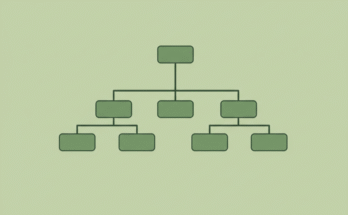Have you ever heard the word “blockchain” and thought, “That sounds complicated“? Don’t worry you’re not alone. While blockchain might seem like a high-tech buzzword, it’s actually a pretty straightforward concept once you break it down. In this beginner friendly guide, we’ll explore what blockchain is, how it works, and why it’s such a big deal in today’s digital world.
![What Is Blockchain and How Does It Work? [Beginner’s Guide]](https://mineatech.com/wp-content/uploads/2025/06/what-is-blockchain-and-how-does-it-work-beginners-guide.png)
What Is Blockchain?
At its core, blockchain is a type of digital ledger. Think of it like a highly secure notebook that keeps a record of transactions. But instead of being stored in one central location (like a bank’s database), this notebook is shared across a network of computers. Each page in the notebook is called a “block“, and these blocks are linked together in chronological order to form a “chain“, hence the name, blockchain.
What makes blockchain so special is that it’s decentralized, transparent, and secure. Unlike traditional systems where one organization (like a bank or government) controls the data, blockchain is maintained by a network of users. This means no single person or entity has complete control, making it much harder to tamper with.
How Does Blockchain Work?
Okay, so we know blockchain is like a digital notebook shared across many computers. But how does it actually work? Here’s a simple step by step breakdown:
1. A Transaction Is Made
Let’s say you want to send money to your friend using cryptocurrency (like Bitcoin). This transaction is the starting point it’s like writing a new entry in the digital notebook.
2. The Transaction Is Verified
Before the transaction can be added to the blockchain, it needs to be verified. This is done by a network of computers (called nodes) that check if the transaction is valid. For example, they’ll confirm that you actually have enough funds to send.
3. The Transaction Is Added to a Block
Once verified, your transaction is grouped with other transactions to form a “block“. Think of this as adding a new page to the notebook.
4. The Block Is Linked to the Chain
Here’s where the magic happens! The new block is linked to the previous block using something called cryptography a fancy way of saying it’s locked in place with a super-secure digital code. This makes it nearly impossible to alter or delete any information.
5. The Blockchain Updates Across the Network
Finally, the updated blockchain (with the new block added) is shared across all the computers in the network. Everyone gets the same updated copy, ensuring transparency and trust. And that’s it! The transaction is now securely recorded on the blockchain for everyone in the network to see.
Why Is Blockchain Important?
→ You might be wondering, “Why all the fuss about blockchain?” Well, here are some reasons why this technology is making waves:
1. Decentralization
Traditional systems rely on a central authority (like a bank or company) to manage data. Blockchain removes this middleman by distributing data across a network of computers. This makes systems more democratic and less prone to corruption or failure.
2. Security
Because each block is linked to the one before it using cryptography, altering data on the blockchain is incredibly difficult. Plus, since everyone in the network has a copy of the blockchain, any attempt to tamper with it would be quickly spotted.
3. Transparency
Blockchain is like an open book anyone in the network can see the transactions recorded on it. This level of transparency builds trust and accountability.
4. Efficiency
Blockchain can streamline processes by eliminating the need for intermediaries. For example, cross-border payments (which usually take days) can be completed in minutes using blockchain technology.
Real-World Applications of Blockchain
→ Blockchain isn’t just about cryptocurrency like Bitcoin, it has tons of other uses! Here are a few examples:
- Finance: Blockchain can make payments faster and cheaper while reducing fraud.
- Supply Chain: Companies can use blockchain to track products from production to delivery, ensuring authenticity and quality.
- Healthcare: Patient records can be securely stored and shared using blockchain, giving patients more control over their data.
- Voting: Blockchain-based voting systems could make elections more secure and transparent.
- Art and Entertainment: Artists can use blockchain to prove ownership of their work or ensure they get paid fairly through smart contracts.
Common Misconceptions About Blockchain
→ Let’s clear up some myths:
- It’s too complicated for everyday use: While the underlying technology might be complex, user-friendly apps and platforms are making blockchain accessible to everyone.
- Blockchain is only for Bitcoin: Nope! While Bitcoin was the first major use case for blockchain, the technology can be applied to countless industries.
- Blockchain isn’t secure: Actually, blockchain is one of the most secure technologies out there because of its decentralized nature and cryptographic protection.
The Future of Blockchain
Blockchain is still in its early stages, much like the internet was in the 1990s. As the technology matures, we can expect improvements in scalability, energy efficiency, and user-friendliness. Innovations like layer-2 solutions (e.g., Bitcoin’s Lightning Network) and new consensus mechanisms are already addressing current limitations. In the coming years, blockchain could transform industries, create new economic models, and empower individuals by giving them more control over their data and assets.
Conclusion
Blockchain might sound intimidating at first, but at its heart, it’s just a clever way of storing and sharing information securely. Whether you’re interested in cryptocurrency or curious about how this technology can transform industries, understanding blockchain is a great first step.
So next time someone mentions blockchain at a dinner party, you’ll be ready to jump into the conversation with confidence (and maybe even impress your friends). Who knows? You might even find yourself exploring how blockchain could benefit your own life or career.


![[Blockchain Beyond Cryptocurrency] The Untapped Potential Across Industries](https://mineatech.com/wp-content/uploads/2025/08/blockchain-beyond-cryptocurrency-the-untapped-potential-across-industries-348x215.png)
![What Is a Blockchain Consensus Algorithm? [Explained Simply]](https://mineatech.com/wp-content/uploads/2025/08/what-is-a-blockchain-consensus-algorithm-explained-simply-348x215.png)